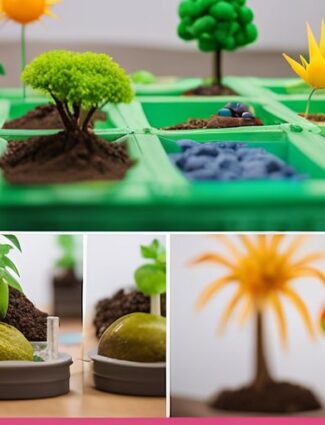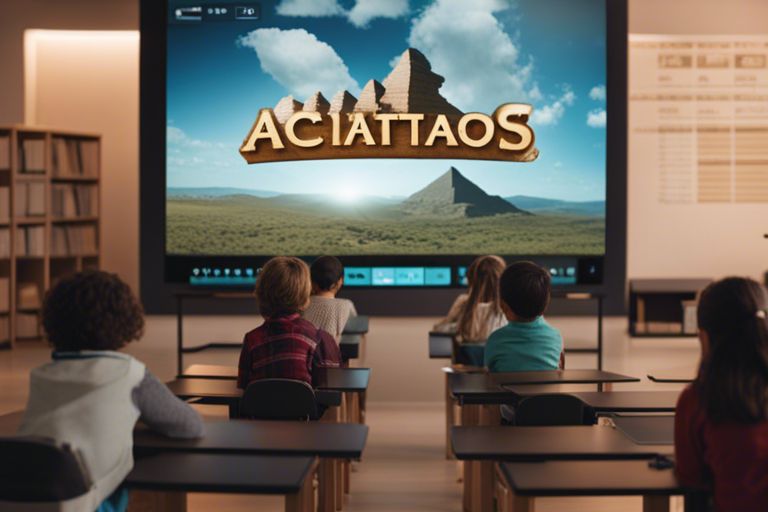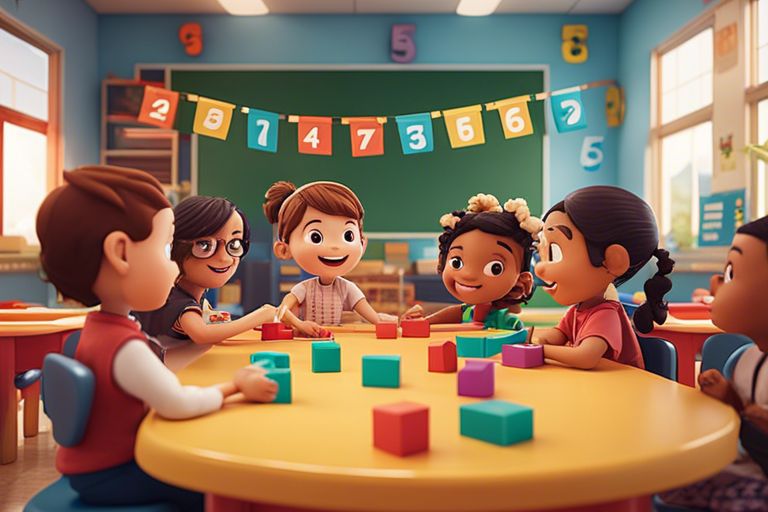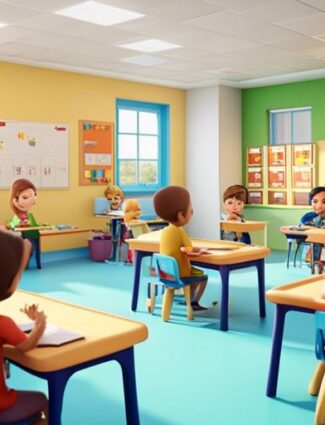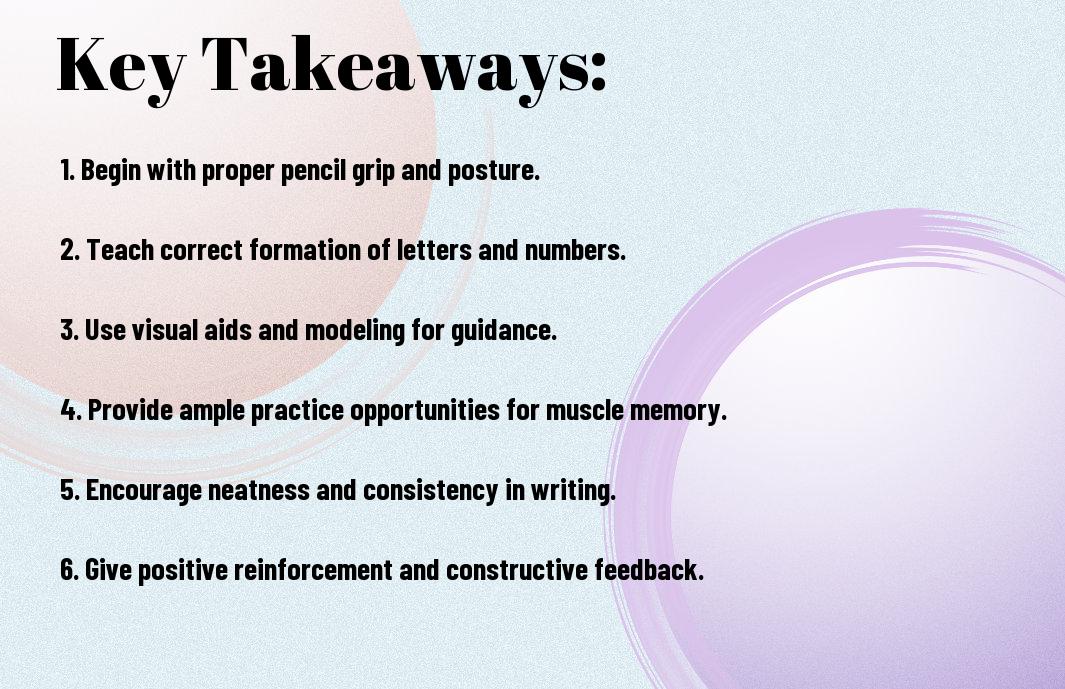You may have heard the term “storytelling” before, but do you understand its significance in the classroom? Effective storytelling techniques can capture the attention of your elementary school students, help them understand complex ideas, and even improve their overall literacy skills. As an elementary school teacher, honing your storytelling abilities can be an invaluable tool for engaging and educating your young learners. In this blog post, we will explore some key storytelling techniques that you can incorporate into your teaching repertoire to create a more dynamic and impactful learning environment for your students.
One of the most important aspects of storytelling for elementary school teachers is the ability to create a strong narrative that captures the imagination of your students. By utilizing vivid imagery and descriptive language, you can transport your students to different worlds, time periods, and experiences, making the learning process more immersive and memorable. Additionally, employing vocal inflection and gestures can help to convey the emotions and nuances of a story, creating a more captivating and engaging experience for your students. Throughout this blog post, we will delve into these and other effective storytelling techniques that will empower you to become a more impactful and dynamic educator.
Key Takeaways:
- Engagement: Use props, visuals, and voices to keep students engaged in the story.
- Character Development: Bring characters to life through dialogue, actions, and emotions.
- Story Structure: Introduce the setting, problem, and resolution in a clear and organized manner.
- Interactive Elements: Encourage students to participate by asking questions and including interactive components in the storytelling.
- Imagination and Creativity: Encourage students to use their imagination and explore creativity through storytelling activities.

Understanding Storytelling
While storytelling is an age-old tradition, it is also a powerful teaching tool. Effective storytelling can captivate your students’ attention and make learning more engaging. By understanding the fundamentals of storytelling, you can enhance your teaching techniques and create a more impactful learning experience for your elementary school students.
Definition and Elements of a Story
When it comes to storytelling, a story is a sequence of events that unfolds over time and has a beginning, middle, and end. It typically features characters, a setting, a plot, and a theme. The characters drive the story forward, and the plot is the sequence of events that unfold. The setting provides the backdrop for the story, and the theme is the central idea or message. Effective storytelling requires a careful balance of these elements to create a compelling narrative that resonates with your students.
The History of Storytelling in Teaching
Storytelling has been an integral part of teaching throughout history. In ancient times, stories were passed down orally from generation to generation, serving as a means of preserving cultural traditions and passing on knowledge. In the classroom, storytelling has been used as a tool for teaching moral lessons, conveying important information, and stimulating imagination. Today, storytelling remains a valuable teaching technique, as it has the power to engage students and facilitate deeper understanding of complex concepts.
Preparing to Tell a Story
The key to effective storytelling in the classroom lies in your preparation. Before you even begin to tell a story, it is essential to consider various factors that will contribute to the success of your storytelling session. This involves selecting appropriate stories, adapting them to suit the age and maturity level of your students, and integrating curriculum objectives with the stories you choose to tell.
Selection of Appropriate Stories for Elementary Students
When selecting a story to tell your elementary students, it is crucial to consider their age, interests, and comprehension levels. Choose stories that are not only engaging but also suitable for their level of understanding. Look for stories with relatable characters, simple plot lines, and vibrant illustrations that will capture their attention and imagination. Additionally, consider themes that are relevant to their lives and experiences, as this will make the story more meaningful and impactful for them.
Adapting Stories to Student Age and Maturity Level
Adapting stories to suit the age and maturity level of your students is essential for maintaining their interest and ensuring that the content is appropriate for them. For younger students, consider using more interactive storytelling techniques such as incorporating songs, hand gestures, or props to keep them engaged. Older students may benefit from more complex narratives and thought-provoking themes that stimulate their critical thinking skills. It’s important to strike a balance between challenging them and ensuring that the content is not overwhelming or inappropriate for their developmental stage.
Integrating Curriculum Objectives with Stories
One of the most effective ways to maximize the impact of storytelling in the classroom is to integrate curriculum objectives with the stories you choose to tell. By selecting stories that align with the subjects you are teaching, you can reinforce key concepts and enhance your students’ understanding of the material. Whether it is a historical fiction tale to complement a history lesson or a science-themed story to reinforce scientific concepts, integrating curriculum objectives with stories can positively reinforce learning outcomes and make the material more memorable for your students.
Storytelling Techniques
Lastly, to enhance your storytelling skills, it’s important to consider various techniques that can make your storytelling more engaging and impactful for your elementary school students. For more detailed tips and ideas, you can also visit this resource on Storytelling Tips for Teachers and Children.
Voice Modulation and Pacing
When telling a story, the way you use your voice and pace can significantly impact the overall storytelling experience for your students. By varying your voice tone, volume, and speed, you can create emphasis and suspense in different parts of the story, keeping your students engaged and entertained. Use softer tones for moments of tenderness or sadness, and louder tones for excitement or climactic scenes. Additionally, you can adjust your pacing to match the mood and events of the story, slowing down for moments of suspense and speeding up for action-packed scenes.
Use of Facial Expressions and Gestures
Your facial expressions and gestures can convey emotions and actions that bring the story to life for your students. Using expressive facial cues and appropriate gestures can help your students visualize the characters and events in the story, making it more immersive and captivating. Make eye contact with your students to draw them into the story, and use gestures to illustrate the actions of the characters. Gestures can also help emphasize key points in the story and maintain your students’ attention.
Incorporating Props and Visual Aids
Props and visual aids can add a multi-sensory dimension to your storytelling, making it more interactive and memorable for your students. Use props such as puppets, costumes, or story-related objects to physically represent characters or objects in the story. Visual aids like illustrations, storyboards, or slideshows can help provide visual context and stimulate imagination. By utilizing these tools, you can reinforce the narrative and themes of the story, making it more impactful for your students.
Creating an Interactive Storytelling Environment
Lastly, creating an interactive storytelling environment can encourage active participation from your students, fostering a deeper connection with the story. Encourage your students to ask questions, share their thoughts, and even participate in acting out parts of the story. By engaging them in the storytelling process, you can create a more dynamic and immersive experience that promotes creativity and critical thinking. This interactive approach can also cultivate a love for storytelling and literature among your students.
Building a Storytelling Classroom Culture
Your ability to create a storytelling classroom culture is essential to fostering a love for storytelling in your elementary school students. By implementing effective techniques and strategies, you can create an environment where storytelling flourishes and students are engaged and excited about the power of storytelling.
Designing a Story-Centric Classroom Layout
When designing your classroom layout, consider creating a designated storytelling area that serves as the focal point for storytelling activities. This area can include a cozy rug or cushions where students can sit comfortably, as well as a bookshelf filled with a variety of storybooks. Additionally, consider displaying student-created stories and illustrations to showcase the importance of storytelling in the classroom. By creating a visually appealing and comfortable space for storytelling, you can encourage students to actively participate in storytelling activities.
Encouraging a Community of Storytellers
To build a storytelling culture in your classroom, it’s important to encourage collaboration and sharing among your students. You can achieve this by implementing activities that allow students to work together to create and share stories. For example, pair students up for storytelling exercises or create opportunities for group storytelling sessions. By fostering a sense of community and collaboration, you can create an environment where students feel comfortable sharing their stories and ideas.
Student Participation and Story Creation
One of the most effective ways to build a storytelling culture in your classroom is to empower your students to become storytellers themselves. Encourage them to share their personal stories, experiences, and imaginative tales with the class. Provide opportunities for students to create their own stories through writing, drawing, or dramatic performances. By empowering and supporting student participation and story creation, you can cultivate a love for storytelling in your classroom.
Storytelling Across the Curriculum
After perfecting your storytelling techniques, it’s important to understand how you can incorporate storytelling into various subjects across the curriculum. Using storytelling in your classroom can improve engagement and comprehension in different subject areas, making it a versatile and effective teaching tool.
Incorporating Storytelling into Language Arts
When it comes to teaching language arts, storytelling can be a powerful tool for improving students’ reading and writing skills. By sharing diverse stories with your students, you can expose them to different writing styles, vocabulary, and sentence structures. Encouraging your students to create their own stories enables them to practice using language creatively, which can improve their overall language skills.
Using Stories to Teach Math Concepts
Believe it or not, storytelling can also be an effective tool for teaching math concepts. By incorporating stories that involve mathematical problems or scenarios, you can help students understand the practical applications of math concepts. This approach can make math more engaging and relatable for students, helping them to overcome any fear or apprehension about the subject.
Exploring History Through Storytelling
History can come to life through storytelling. By using narratives to present historical events and figures, you can make the subject more accessible and engaging for your students. Stories allow students to connect emotionally to the events and people of the past, creating a more memorable and meaningful learning experience.
Storytelling in Science Education
Storytelling can also be a valuable tool in science education. By incorporating real-life stories of scientific discovery and innovation, you can help your students understand the human side of scientific exploration. This approach can foster a sense of curiosity and wonder, as well as an understanding of the relevance of scientific concepts in the real world.
Using these storytelling techniques across the curriculum can enhance your students’ learning experiences and create a more engaging and immersive classroom environment. Remember to adapt your stories to the age and interests of your students, and don’t be afraid to experiment with different storytelling approaches to find what works best for you and your classroom. Keep in mind that stories have the power to captivate and inspire young minds, making learning both enjoyable and effective.
Assessing Storytelling Impact
To ensure that your storytelling is making an impact on your elementary school students, it’s important to assess the effectiveness of your storytelling techniques. This will help you understand how engaged your students are, whether they are learning from the stories, and how you can improve as a storyteller.
Evaluating Student Engagement
One way to assess the impact of your storytelling is to evaluate student engagement. Are your students actively listening and participating in the storytelling process? Look for signs of engagement such as eye contact, body language, and verbal responses from your students. You can also ask them questions about the story to gauge their understanding and interest. By observing and interacting with your students during storytelling sessions, you can gain valuable insights into the level of engagement and make adjustments to your storytelling techniques accordingly.
Measuring Learning Outcomes through Stories
Another important aspect of assessing storytelling impact is to measure the learning outcomes of your students through the stories you tell. Are your students able to recall key plot points, characters, and lessons from the stories? You can assess their comprehension and retention by incorporating related activities or discussions after the storytelling sessions. Additionally, you can use informal assessments such as storytelling-related assignments or projects to gauge the depth of their learning.
Feedback Mechanisms for Continuous Improvement
Lastly, establishing feedback mechanisms for continuous improvement is essential in assessing the impact of your storytelling. Encourage your students to provide their feedback on the storytelling experience, asking them what they enjoyed, what they learned, and how the storytelling could be enhanced. Additionally, you can seek feedback from your colleagues or mentors for their insights and suggestions. By actively seeking feedback, you can identify areas for improvement and refine your storytelling techniques to create a more impactful learning experience for your students.
Challenges and Solutions in Storytelling
Despite the many benefits of storytelling, as an elementary school teacher, you may encounter a few challenges when it comes to effectively engaging your students. These challenges can range from addressing diverse learning styles to overcoming common storytelling hurdles and utilizing technology in storytelling. By identifying these challenges and implementing appropriate solutions, you can enhance your storytelling techniques and create a more enriching learning experience for your students.
Addressing Diverse Learning Styles
One of the biggest challenges in storytelling is addressing the diverse learning styles of your students. Every child learns differently, and it’s essential to recognize and accommodate these differences in your storytelling approach. Some students may be visual learners, while others may be auditory or kinesthetic learners. To effectively engage all of your students, it’s important to incorporate various storytelling techniques that appeal to different learning styles. You can use visual aids, such as props or illustrations, incorporate music or sound effects, and encourage physical movement during storytelling activities. By catering to diverse learning styles, you can ensure that all of your students are actively participating and absorbing the content of the story.
Overcoming Common Storytelling Hurdles
Another challenge in storytelling is overcoming common hurdles that may arise during your storytelling sessions. These hurdles can include distractions, lack of attentiveness, or difficulty maintaining control over the classroom environment. To overcome these challenges, it’s important to establish **clear** **expectations** and guidelines for storytelling sessions. **You can set** **clear** **rules for behavior and attentiveness, create engaging and interactive storytelling activities, and **implement** **strategies** to maintain **focus** throughout the storytelling experience. Additionally, **stay** **adaptable** and be prepared to **pivot** your storytelling approach if **you** notice that certain strategies are not effectively engaging your students.
Utilizing Technology in Storytelling
In today’s digital age, utilizing technology in storytelling can provide **exciting** opportunities to **enhance** the learning experience for your students. **You** can incorporate multimedia elements, such as animated e-books, interactive storytelling apps, or digital storytelling platforms, to **create** **a** **more** **dynamic and immersive** storytelling experience. These **technological** tools **can** captivate the attention of **your** students and **enhance** their **understanding** of the **story**. However, it’s important to **maintain** a **balance** and **ensure** that **technology** **complements** the storytelling experience rather than **overpowering** it. **By** incorporating **technology** in a **thoughtful** and **meaningful** **manner**, you **can** **bring** the **excitement** of **modern** **tools** **to** your storytelling **approach**.
Effective Storytelling Techniques for Elementary School Teachers
From above, you now have a better understanding of the importance and impact of effective storytelling in the elementary school classroom. By incorporating elements such as expression, body language, and engaging visuals, you can create a captivating and memorable experience for your students. Remember to consider the cultural diversity of your students and choose stories that are inclusive and relatable to all. Additionally, don’t be afraid to use your own personal experiences and emotions to connect with the students on a deeper level and make the stories more meaningful.
As you continue to refine your storytelling techniques, keep in mind the age and interests of your students, and tailor your storytelling approach to appeal to their specific needs. By encouraging participation and interaction, you can further enhance the storytelling experience and create a more engaging and interactive environment. Your ability to effectively communicate through storytelling will not only foster a love for reading and learning, but it will also help your students develop important listening and comprehension skills that are essential for their academic and personal growth.
Effective Storytelling Techniques for Elementary School Teachers
Q: Why is storytelling important in elementary education?
A: Storytelling helps engage students’ imagination, promotes active listening, and aids in developing literacy skills. It also helps students connect with the material and understand complex concepts in a relatable way.
Q: What are some effective storytelling techniques for elementary school teachers?
A: Some effective techniques include using props and visual aids, incorporating expressive voice and gestures, encouraging student participation, and personalizing the story to make it relevant to the students’ experiences.
Q: How can teachers choose the right stories for their students?
A: Teachers should consider the age and interests of their students when choosing stories. It’s important to select stories with clear themes, relatable characters, and appropriate language and length for the students’ comprehension level.
Q: How can storytelling be integrated into the curriculum?
A: Storytelling can be integrated into various subjects such as language arts, social studies, and science. Teachers can use stories to introduce new topics, reinforce concepts, and spark discussions or creative activities related to the curriculum.
Q: What are the benefits of using storytelling as a teaching tool?
A: The benefits of using storytelling as a teaching tool include fostering a love for reading and learning, promoting empathy and understanding of different perspectives, and creating a positive and engaging learning environment for students.








